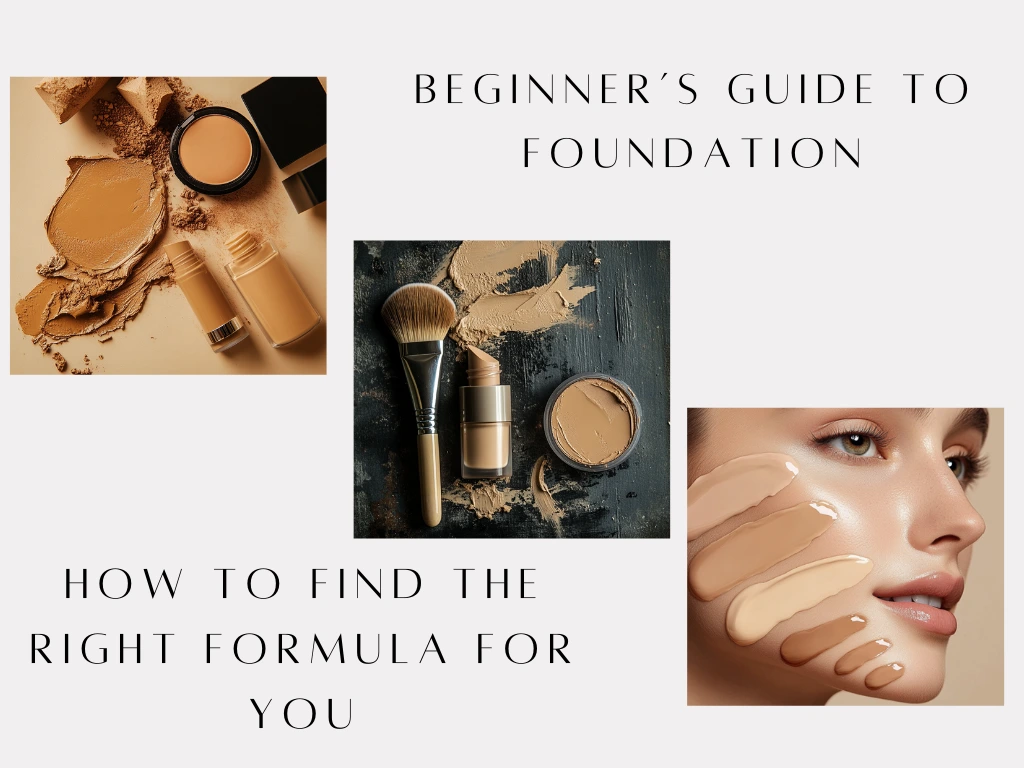The foundation is the base of every successful makeup look. Whether you’re aiming for a natural appearance or full coverage, choosing the right formula is the key to a flawless look. The variety of types, brands, and textures available on the market makes finding the perfect foundation a true challenge.
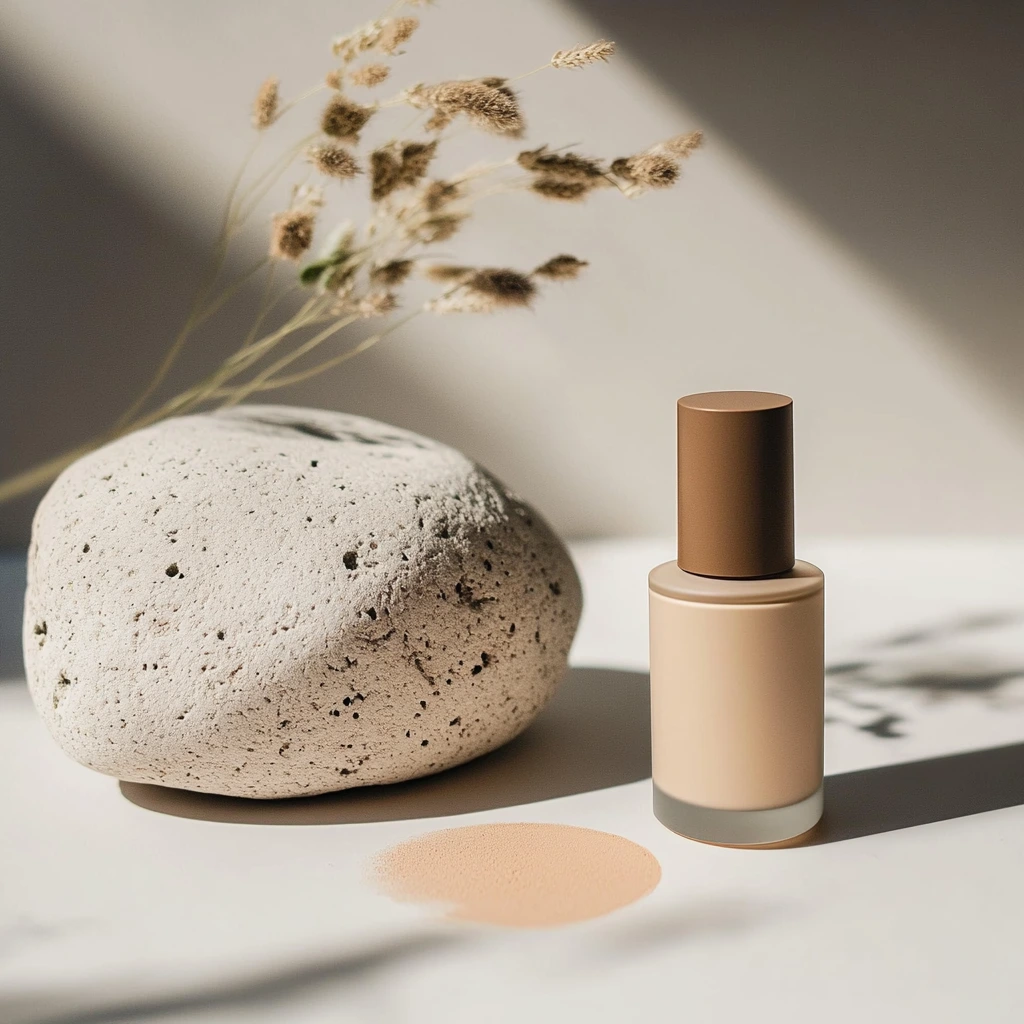
In this article, we’ll explore the essential steps to help you choose a foundation tailored to your skin type, needs, and preferences. From identifying your undertone to selecting the texture that works best for you, this guide is designed for beginners who want to make an informed decision.
Are you ready to discover the perfect base for your makeup? Let’s get started!
How to Determine Your Skin Type?
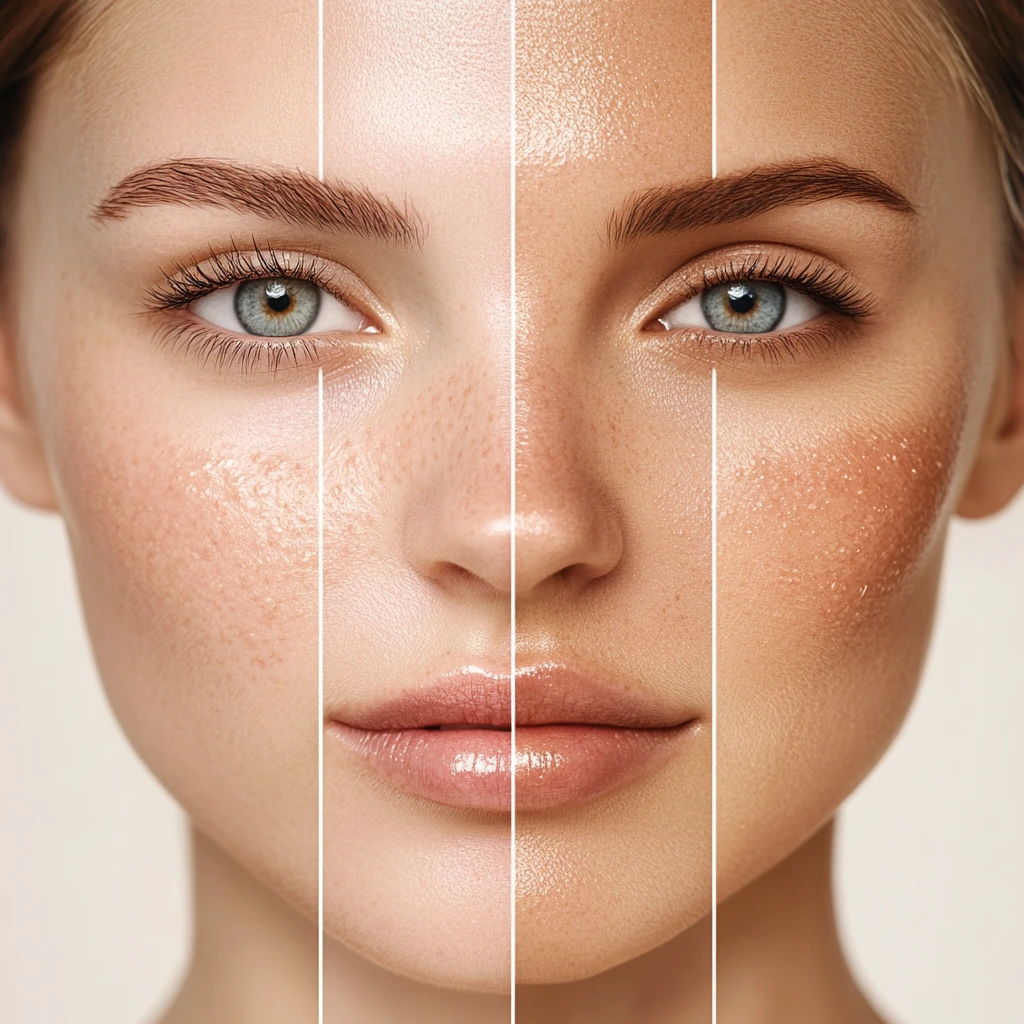
Understanding your skin type is the first step to choosing the right foundation and cosmetics overall. A simple way to determine your skin type is by observing it in its natural state. Here’s how:
Start by cleansing your face with a gentle product and leave your skin without creams or makeup for about an hour. Then, take a close look:
- If your skin looks oily and shiny, you likely have oily skin.
- If it feels tight or has visible flaking, you probably have dry skin.
- If your T-zone (forehead, nose, and chin) appears oily, but other areas are normal or dry, you have combination skin.
- If you notice no specific issues or imbalances, your skin is likely normal.
- For sensitive skin, common signs include redness, irritation, or a tendency toward allergic reactions.
Why is Consulting a Specialist Important for Determining Your Skin Type?
Determining your skin type at home is helpful, but first impressions can sometimes be misleading. For example, skin that appears oily due to excessive shine and sebum production might actually be dry. This happens when a lack of moisture causes the skin to produce excess oil in an attempt to compensate for the dryness. As a result, the skin seems oily, while the real issue is dehydration.
Specialists use professional equipment and methods to analyze the structure, hydration levels, and behavior of your skin. They can guide you toward the right products and routines that will help balance your skin’s condition without exacerbating the problem.
If you’re unsure about your skin type or struggling to find suitable products, consulting a specialist is an investment worth making. Not only will it improve your skincare results, but it will also save you time and money by avoiding incorrect choices.
Different Levels of Coverage and When to Use Them

Foundation is available in different levels of coverage—light, medium, and full—to meet the needs of every skin type and occasion:
- Light coverage, often found in textures like tinted moisturizers or serums, is ideal for everyday use when you want to even out your complexion while keeping your skin’s natural look.
- Medium coverage is suitable for a more long-lasting appearance, such as for work or meetings, and is usually available in liquid or cream formulas. It allows the skin to “breathe” while covering minor imperfections.
- Full coverage is the best choice for special events or if you want to conceal visible imperfections like acne, scars, or pigmentation spots. This type of foundation is typically offered in thick cream or stick formulas.
In addition to the level of coverage, texture also plays an important role—for example:
- Powder or mineral foundations are excellent for oily skin.
- Creamy and hydrating options are ideal for dry skin.
The key is to choose coverage and texture according to your skin’s needs and the occasion so you look natural and confident in any situation.
How to Identify Your Undertone?
Understanding your skin’s undertone is the key to choosing a foundation that looks natural and harmonious. Your skin’s undertone is determined by the natural hues beneath the surface and can be:
- Warm
- Cool
- Neutral
To identify your undertone, observe the veins on your wrist:
- If they appear green, your undertone is warm.
- If they are blue or purple, your undertone is cool.
- If it’s hard to tell, you likely have a neutral undertone.
Another method is to notice how your skin reacts to different colors and jewelry. If gold jewelry suits you better than silver, you likely have a warm undertone. If silver looks better on you, your undertone is cool. If both gold and silver look good, your undertone is probably neutral.
An easy way to check your undertone is by observing how your skin reacts to sun exposure: Skin with a cool undertone tends to burn easily; Skin with a warm undertone usually tans to a golden hue.
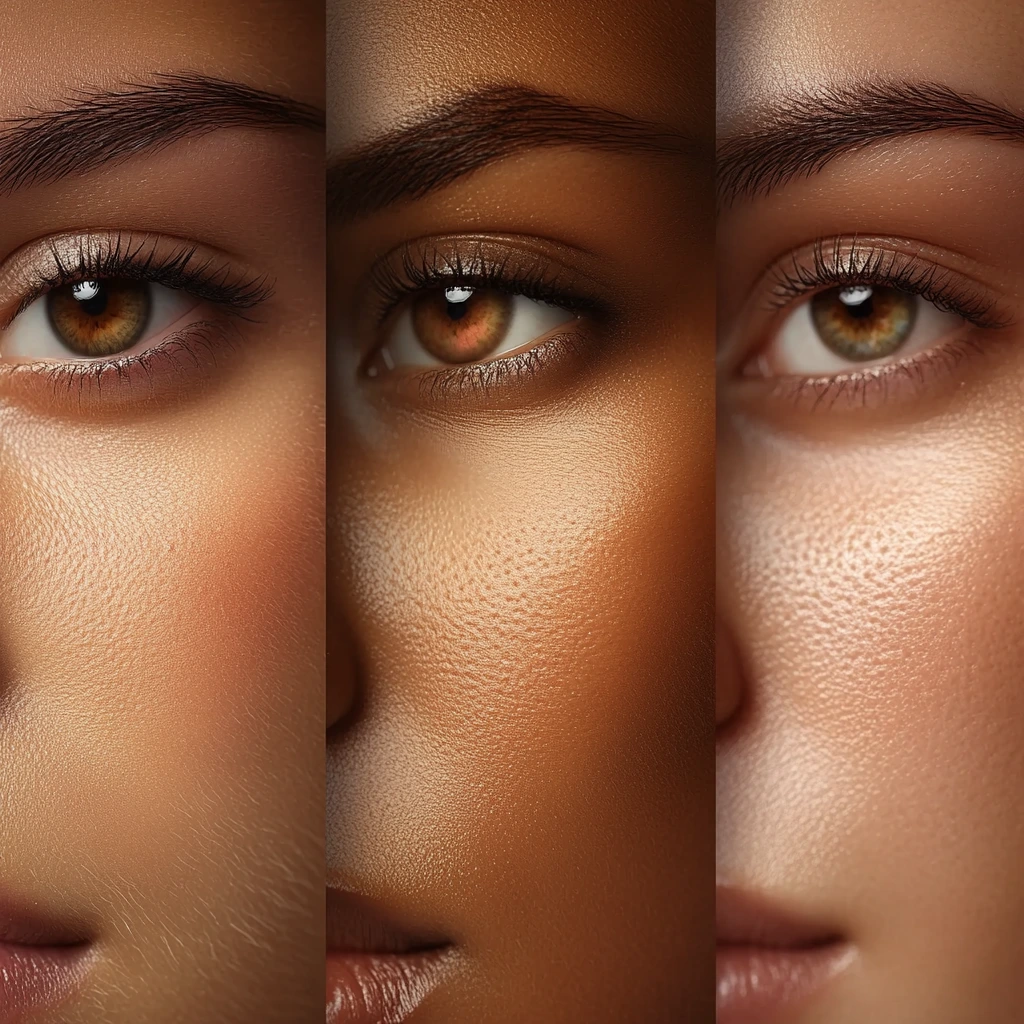
Tips for Testing and Choosing the Right Shade
Once you understand your skin type and undertone, you can move on to selecting the right foundation.
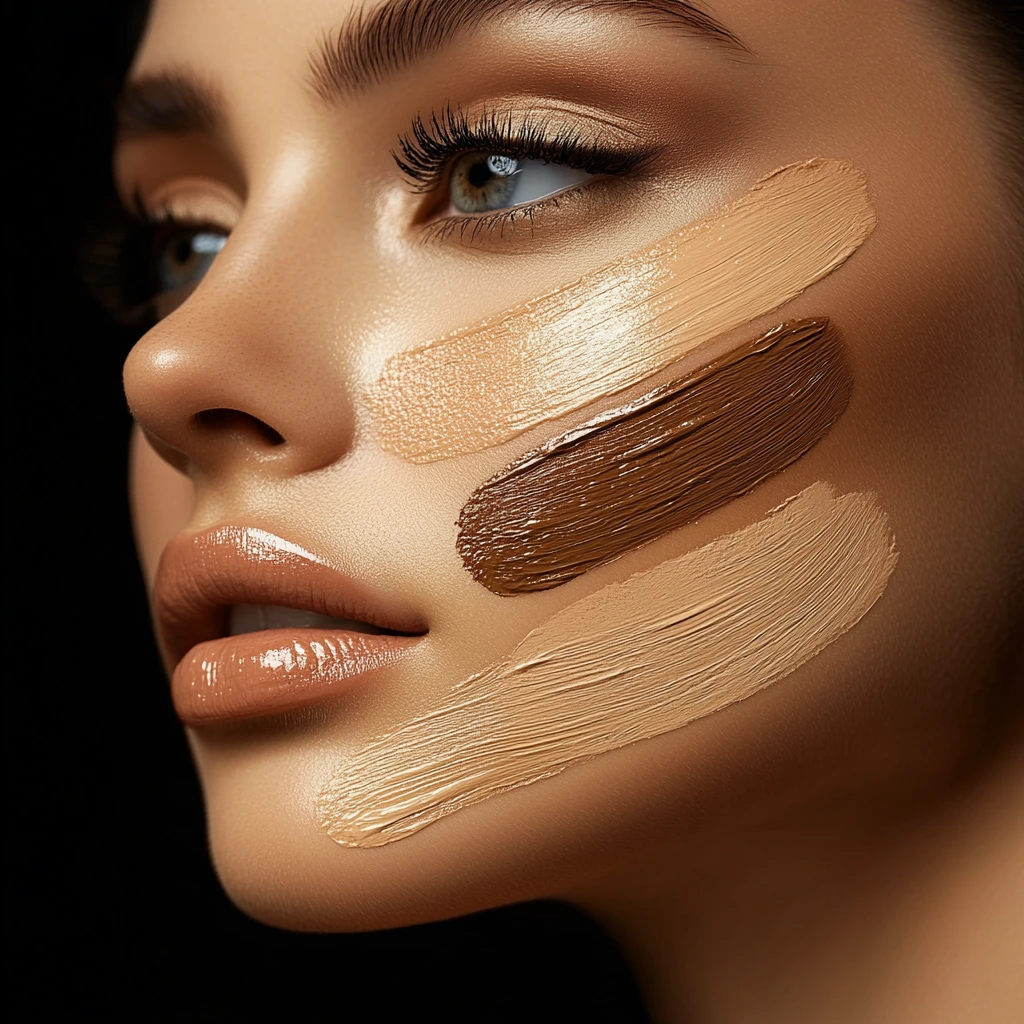
Different cosmetic brands have their own numbering and naming systems for foundation shades, which can make the selection process more complicated. There is no universal standardization, so the same number or name in two different brands can represent entirely different shades. For example, shade “120” in one brand might be light with a cool undertone, while in another, it might be neutral or even warm.
To choose the right numbering and shade for you, it’s important to understand how the brand labels its shades. Many brands categorize their colors by undertone:
- W (Warm): Shades with yellow or golden undertones.
- C (Cool): Shades with pink or bluish undertones.
- N (Neutral): Balanced shades that are neither too warm nor too cool.
The best way to test the product is directly on the skin of your face, not on your hand or wrist, as the tone of these areas often differs from that of your face. Apply a small amount of foundation to your jawline or along the line between your face and neck to see how it blends with both your face and neck tones.
Test the shade in natural daylight, as artificial lighting in stores can distort the true tone. If possible, take samples or apply the foundation and wear it for a few hours to see how it behaves on your skin and whether oxidation changes its color.
Seasonal changes are also important—during summer, the skin usually darkens, while in winter, it lightens. Therefore, it may be helpful to have two shades that you can mix as needed. The most important thing is to choose a product that looks natural, as if it’s a second skin, to create a flawless yet subtle appearance.
Tip: You can use ChatGPT to find the exact foundation shade if you provide a clear photo of your skin in natural light, without makeup. When you send the photo along with information about your preferred brand and formula, ChatGPT can analyze your description and offer shade recommendations based on the brand’s available color ranges.
What Foundation Texture is Suitable for Different Skin Types?
Choosing the right foundation texture depends on your skin type and its specific needs:
Oily Skin: The best options are matte-finish foundations and formulas that control excess sebum. Lightweight liquid foundations without oils and mineral powders are excellent choices, as they help reduce shine and ensure long-lasting makeup.
Combination Skin: Combination skin requires a balanced formula that controls oiliness in the T-zone while hydrating dry areas. Liquid foundations with a satin or semi-matte finish work best, providing even coverage without emphasizing dry or oily patches.
Normal Skin: Most textures work well for normal skin, but liquid or cream foundations with medium coverage and a natural finish are ideal for creating an even and healthy look.
Dry Skin: Dry skin needs hydrating formulas with a creamy texture or foundations with a radiant finish. These prevent the emphasis of dry areas and ensure comfort throughout the day. Products enriched with moisturizing ingredients like hyaluronic acid are also an excellent choice.
Problematic Skin (Acne-prone or Imperfection-prone): For problematic skin, non-comedogenic foundations with light to medium coverage are recommended to avoid clogging pores. Formulas with soothing and anti-inflammatory ingredients, such as salicylic acid, can help reduce acne while providing coverage.
Choosing the right texture is just as important as selecting the right foundation shade, as the proper formula can significantly enhance the appearance and health of your skin.
Common Mistakes When Choosing Foundation
Choosing the right foundation can be challenging, and some common mistakes can lead to unsatisfactory results.
One of the most frequent mistakes is testing the product on the hand or wrist instead of on the face or jawline, where the skin tone is most visible. Another error is neglecting undertones—for instance, selecting a foundation with a pink undertone for skin with a yellowish undertone can result in an unnatural look. Additionally, many people purchase foundation without testing it in natural light, which can distort their perception of the color.
Choosing the wrong texture is also a common issue—for example, a matte foundation can accentuate dry areas and even cause flaking, while a hydrating foundation may exacerbate oiliness on oily skin.
Avoiding these mistakes will help you find a foundation that enhances your natural beauty.

Choosing the right foundation may seem complicated, but with the right knowledge and a few simple steps, the process becomes much easier. Understanding your skin type, undertone, and specific needs is the key to achieving a flawless and natural finish. Remember to test products in natural light! Don’t be afraid to try different formulas and consult with specialists to find the best product for you. With the right foundation, your skin will not only look beautiful but also feel comfortable throughout the day.

